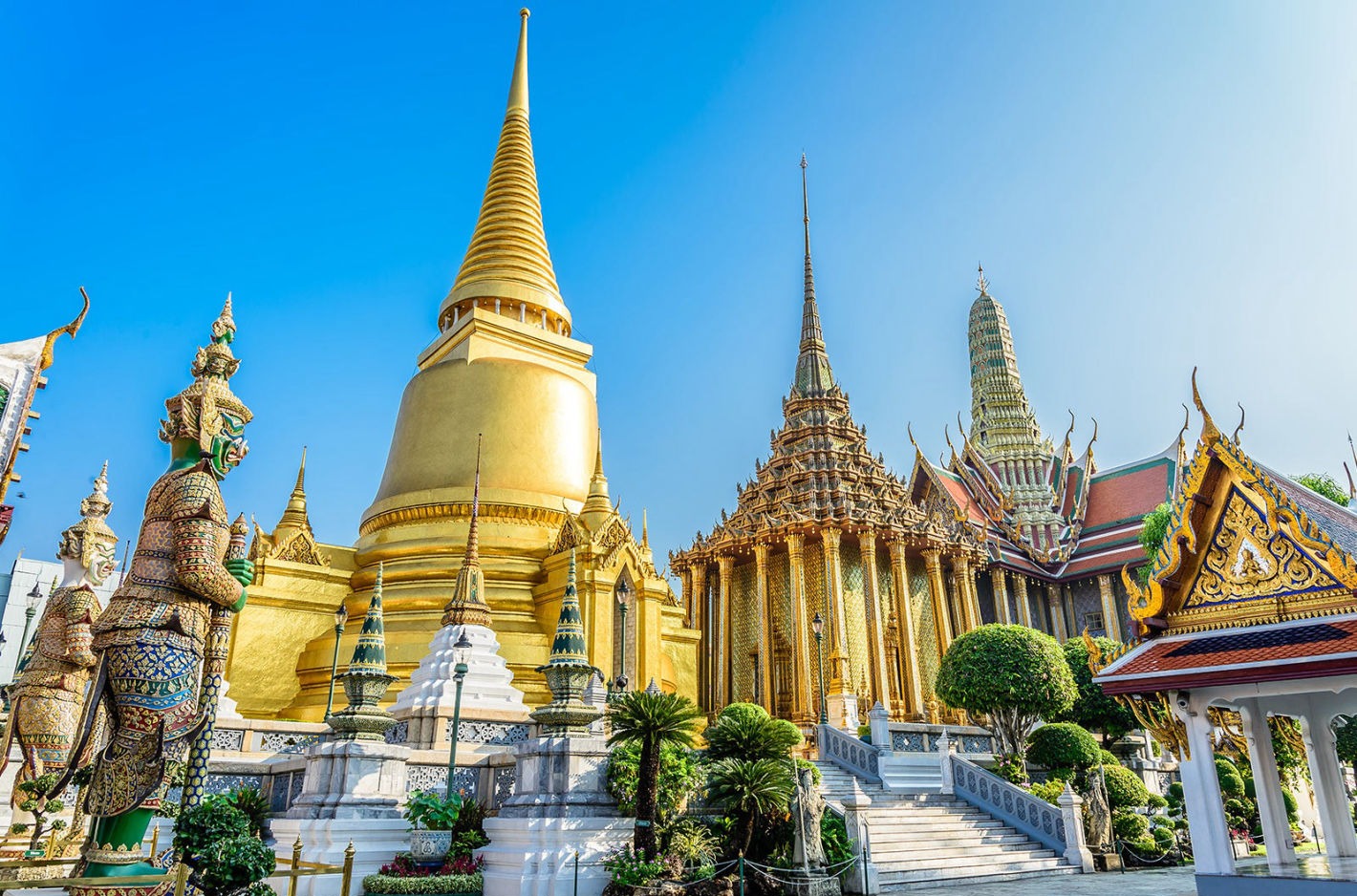
MENZZOO MAGAZINE

BANGKOK TEMPLES
History & Culture-
Bangkok's temples are a unique part of the capital's heart and soul. A visit here would not be complete without visiting at least a couple of them. The architecture is awe-inspiring and the glittering decoration like no other.
The best time to visit most temples is in the early morning. It's cooler and generally less crowded. The temples are not just tourist attractions but also play an important part in Buddhist traditions. Monks live in the temple complexes, wake up around 4am, attend to prayers and duties, and then collect food and necessities from ordinary people on the streets. If you're up very early in Bangkok you will see Wandering monks, dressed in saffron-coloured robes. This daily alms ritual (called tak baht) takes place all over Thailand and is part of the Buddhist philosophy of giving and making merit to attain a better life beyond this one.
Thai temples are sacred places so you must dress appropriately. No shorts or revealing tops, otherwise you won't be allowed in. This applies particularly to Wat Phra Kaew inside the Grand Palace.
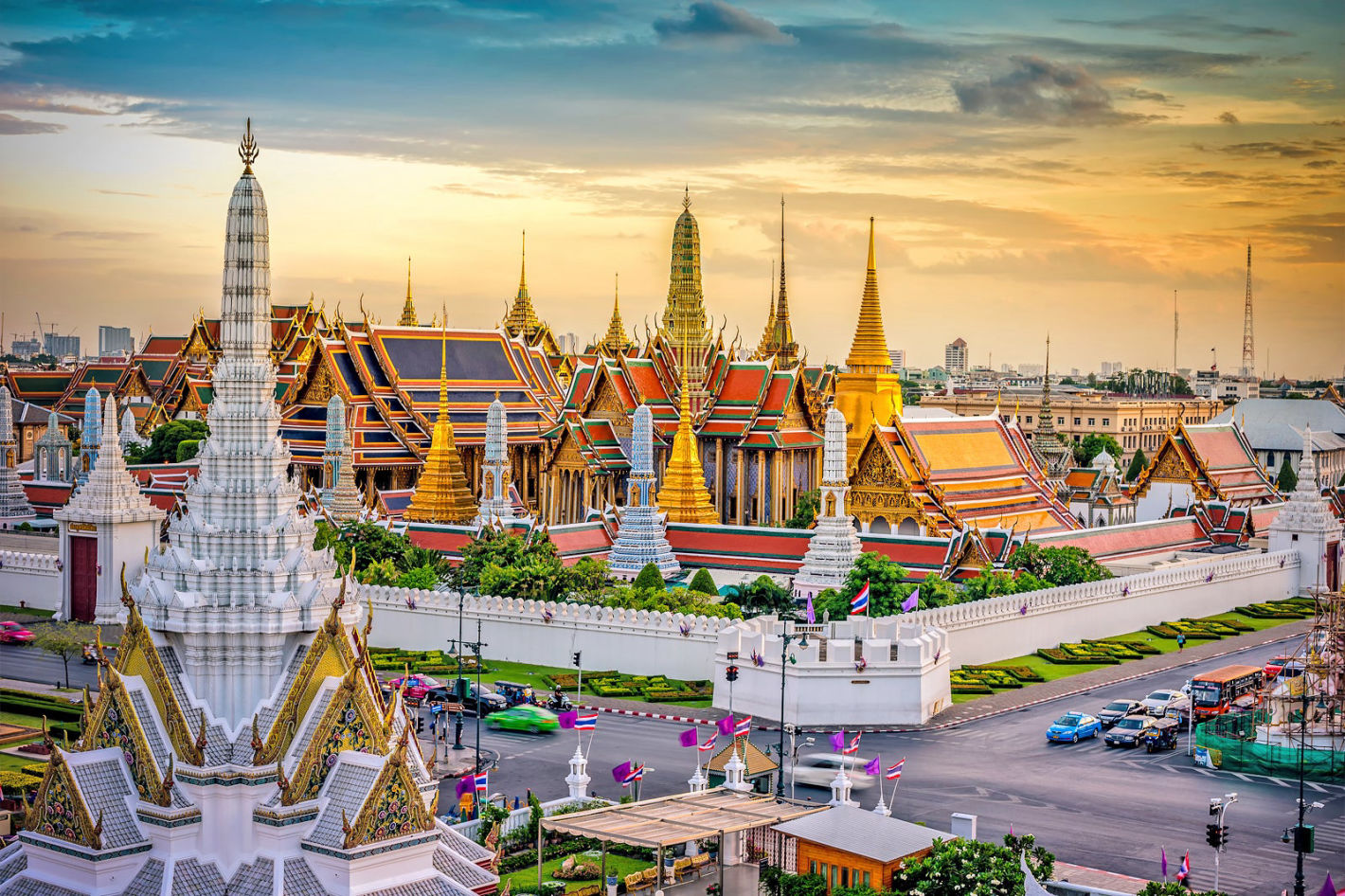
1. WAT PHRA KAEW-
Temple of the Emerald Buddha
Built within the grounds of the Grand Palace, Wat Phra Kaew or 'The Temple of the Emerald Buddha' is the most important and most visited temple in Bangkok. One of the most significant features of Wat Phra Kaew is the Emerald Buddha, carved from a 66 cm tall block of jade. This highly revered icon was first discovered in 1464 in Chiang Rai It was then taken to Laos before coming back to Chiang Mai and finally making a permanent home in Bangkok where you can admire it today.
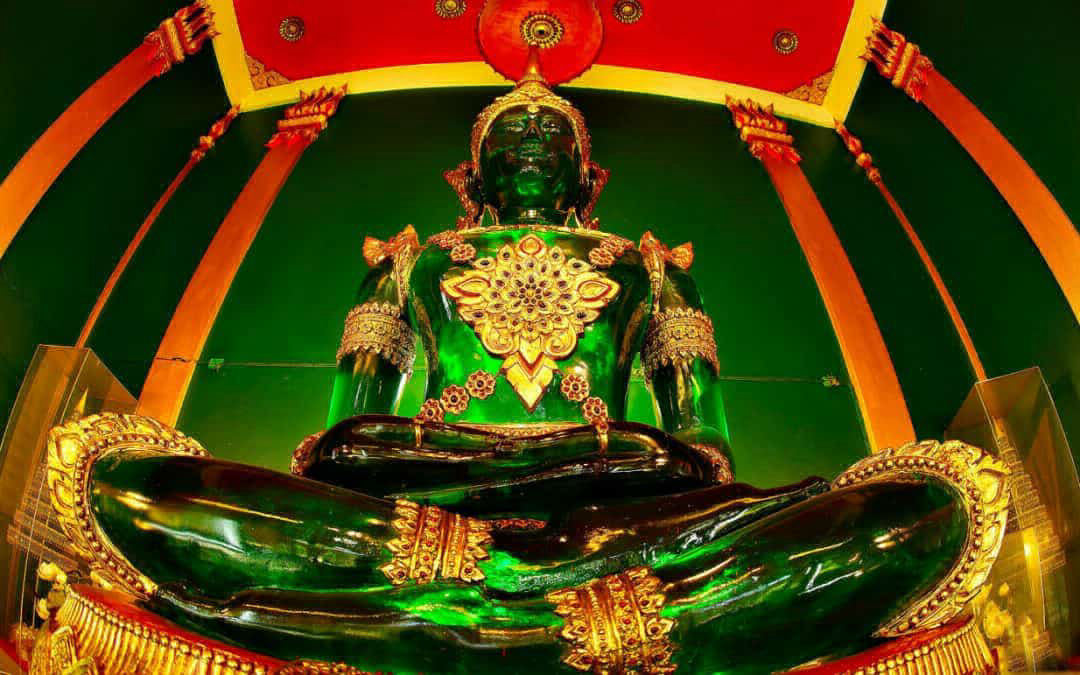
Above; The Emerald Buddha-Wat Phra Kaew BKK
The Emerald Buddha (Phra Putta Maha Mani Ratana Patimakorn) is a Buddha image in the meditating position in the style of the Lanna school of the north and dates back to the 15th century.
Wat Phra Kaew is a superb temple to explore, especially the 2-km-long gallery covered with incredibly detailed mural paintings depicting 178 scenes of the epic story of Ramayana. Around every corner you’ll find tall chedis covered with glazed tiles or gold leaf, but the most photographed building is the massive golden chedi of Phra Sri Rattana, featured on the 1 baht coin. The temple is only open until 3.30pm and entrance costs at least 500 baht for non-Thai citizens. A strict dress code applies – no short pants and no sleeveless shirts.
Wat Phra Kaew
Location: Na Phra Lan Rd, Phra Borom Maha Ratchawang, Phra Nakhon, Bangkok 10200, Thailand
Open: Daily from 8.30am to 3.30pm
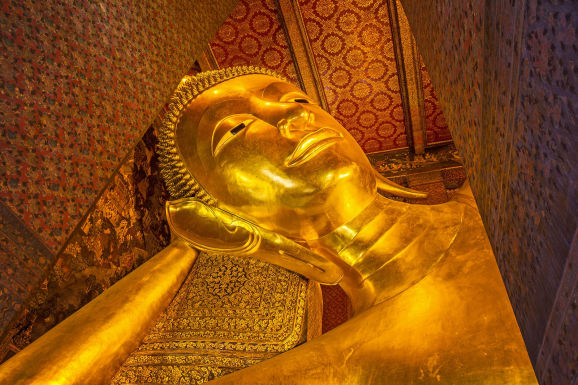
2. WAT PHO-
Home of the reclining Buddha
Wat Pho, named after a monastery in India where Buddha is believed to have lived, is one of the oldest and largest Buddhist temples in Bangkok. Wat Pho is also known as 'The Temple of the Reclining Buddha' thanks to the 15-metre-high, 43-metre-long Buddha image it shelters, covered with gold leaf and baring 4-metre-long feet encrusted with exquisite mother-of-pearl (or nacre) decorations.
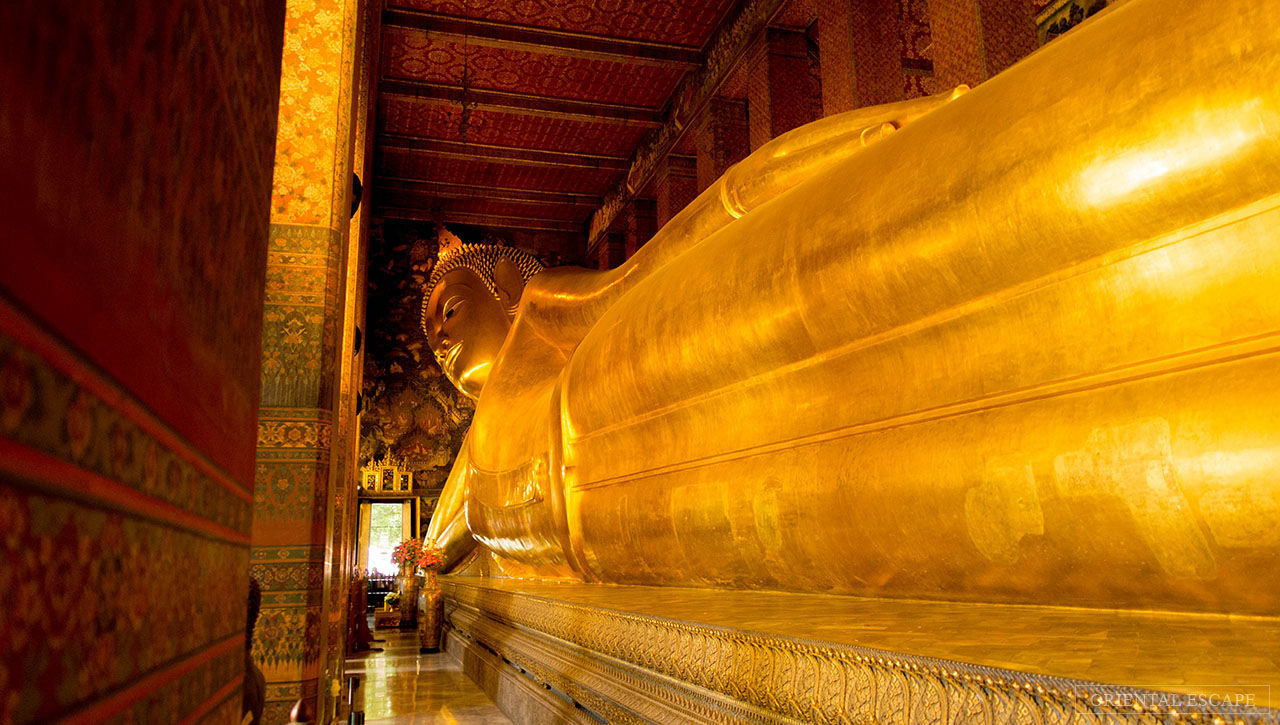
Above; The Reclining Buddha, Wat Pho.
Located just next to the Grand Palace, Wat Pho also houses 1,000 Buddha images and 91 chedis (stupas), including 4 very impressive chedis dedicated to the 4 Chakri kings. Wat Pho is also home to the first Thai massage school where Thai massage is taught at the Traditional Medical Practitioners Association Center, located in a shophouse outside the temple. Just in case you have time to learn it, the temple’s full name is Wat Phra Chettuphon Wimon Mangkhlaram Ratchaworamahawihan. The entrance fee is 100 baht.
Wat Pho
Location: 2 Sanam Chai Rd, Phra Borom Maha Ratchawang, Phra Nakhon, Bangkok 10200, Thailand
Open: Daily from 8 am to 6.30 pm
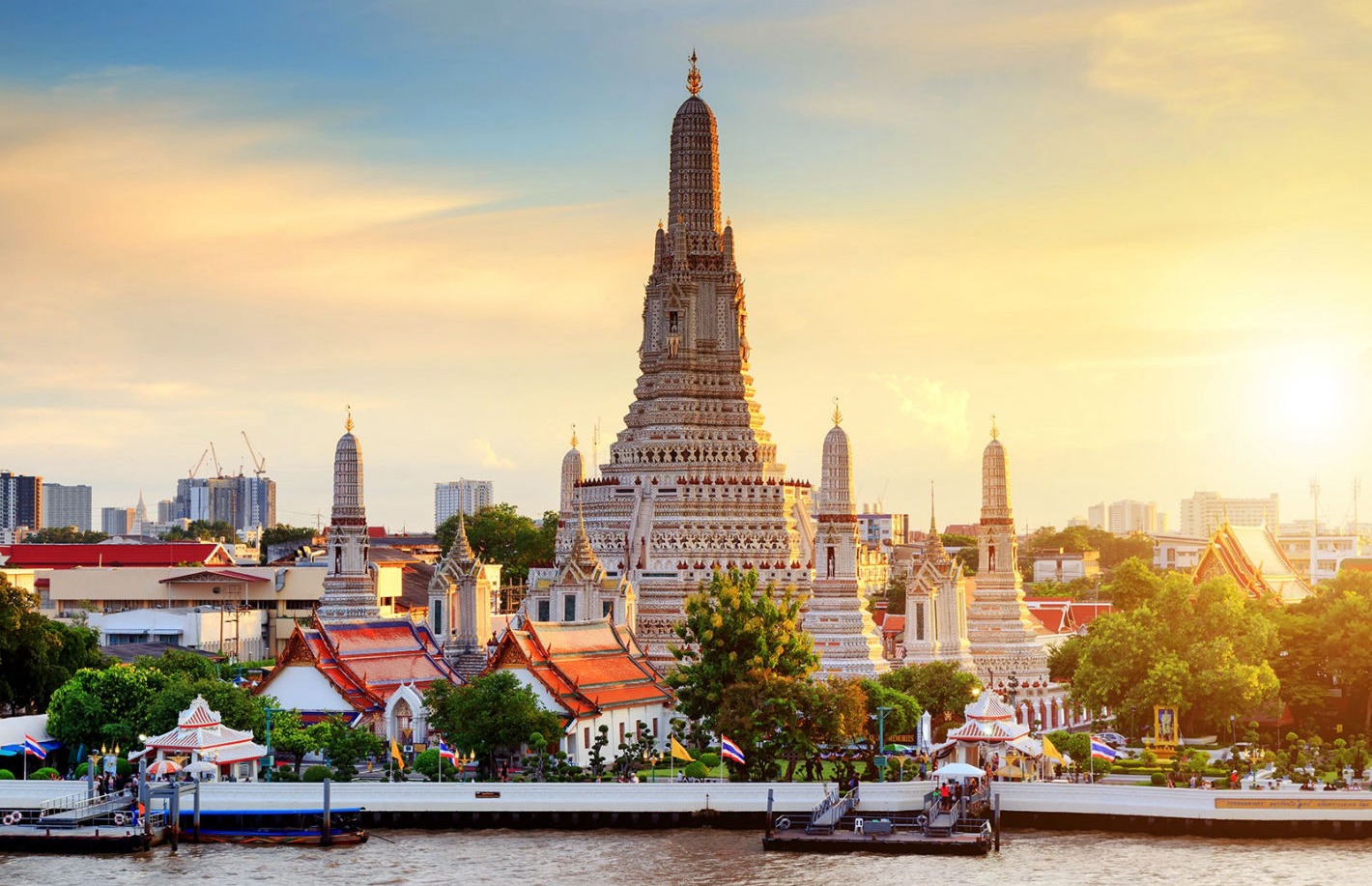
3. WAT ARUN-
The Temple of the Dawn
Wat Arun, the most iconic temple of Bangkok, is located on the Thonburi side of the Chao Phraya River, almost opposite to the Grand Palace and Wat Pho. Built during the 17th century, its full name of 'Wat Arun Ratchawararam Ratchawaramahawihan' is rather hard to remember, so it's often called the 'Temple of the Dawn'. The distinctive shape of Wat Arun consists of a central prang (a Khmer-style tower) surrounded by 4 smaller towers, all encrusted with faience from plates and potteries. The stairs to reach the balcony on the main tower are quite steep, usually easier to climb up than to walk down, but the view from up there is really worth it.
Given the beauty of the architecture and the fine craftsmanship, it’s not surprising that Wat Arun is considered by many as one of the most beautiful temples in Thailand. The prang (spire) by the Chao Phraya is one of Bangkok's world-famous landmarks. The imposing spire rises over 70 metres high, beautifully decorated with tiny pieces of coloured glass and Chinese porcelain placed delicately into intricate patterns.
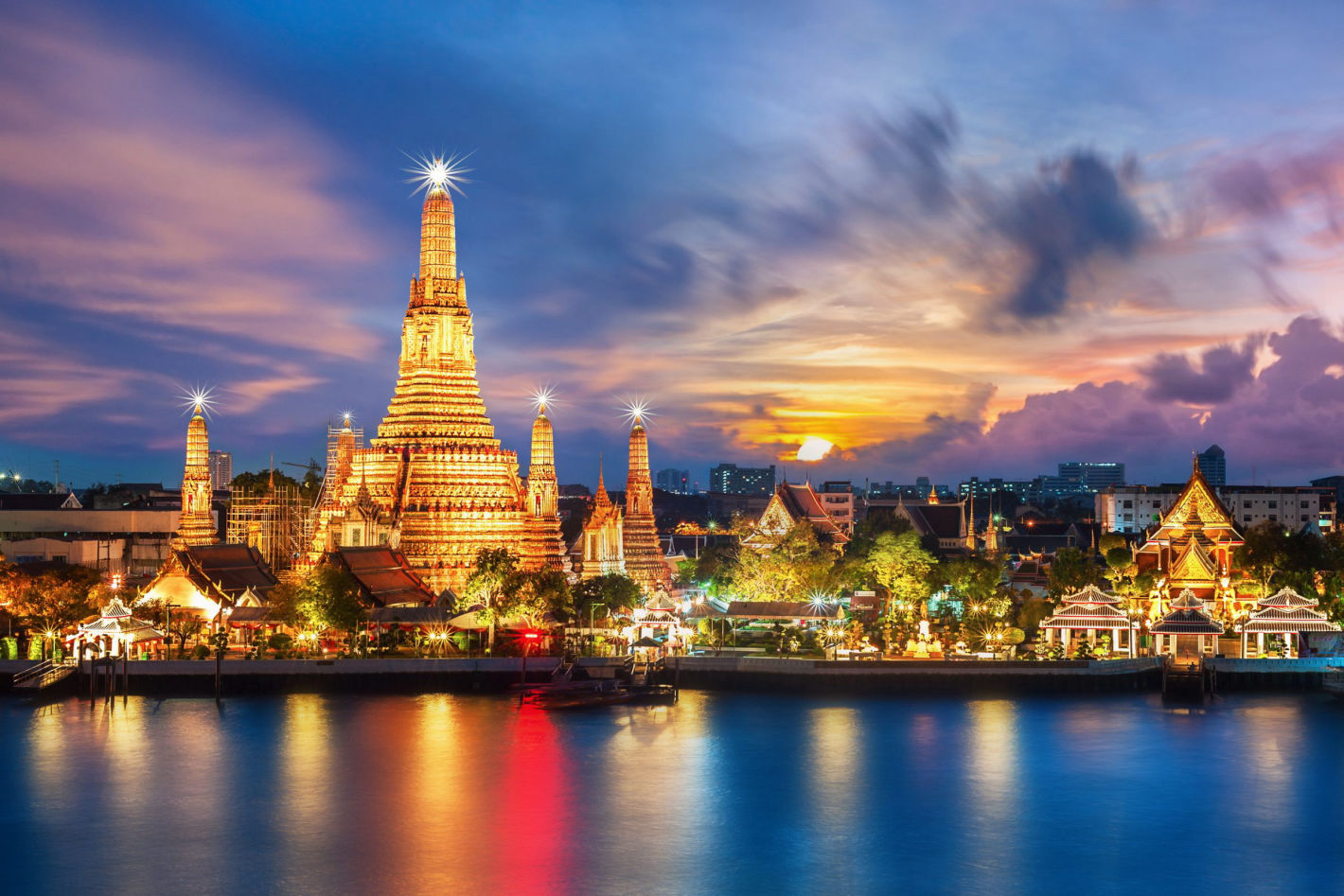
Above; Wat Arun at sundown.
We would recommend spending at least an hour visiting the temple. Although it’s known as the Temple of the Dawn, it's absolutely stunning at sunset, particularly when lit up at night. Even so, the quietest time to visit is early morning, before the crowds.Wat Arun can be easily accessed via ferry across the Chao Phraya River to Maharaj pier and the entrance fee to the temple is around 50 baht.
Wat Arun
Location: 158 Thanon Wang Doem, Wat Arun, Bangkok Yai, Bangkok 10600, Thailand
Open: Daily from 8am to 5.30pm
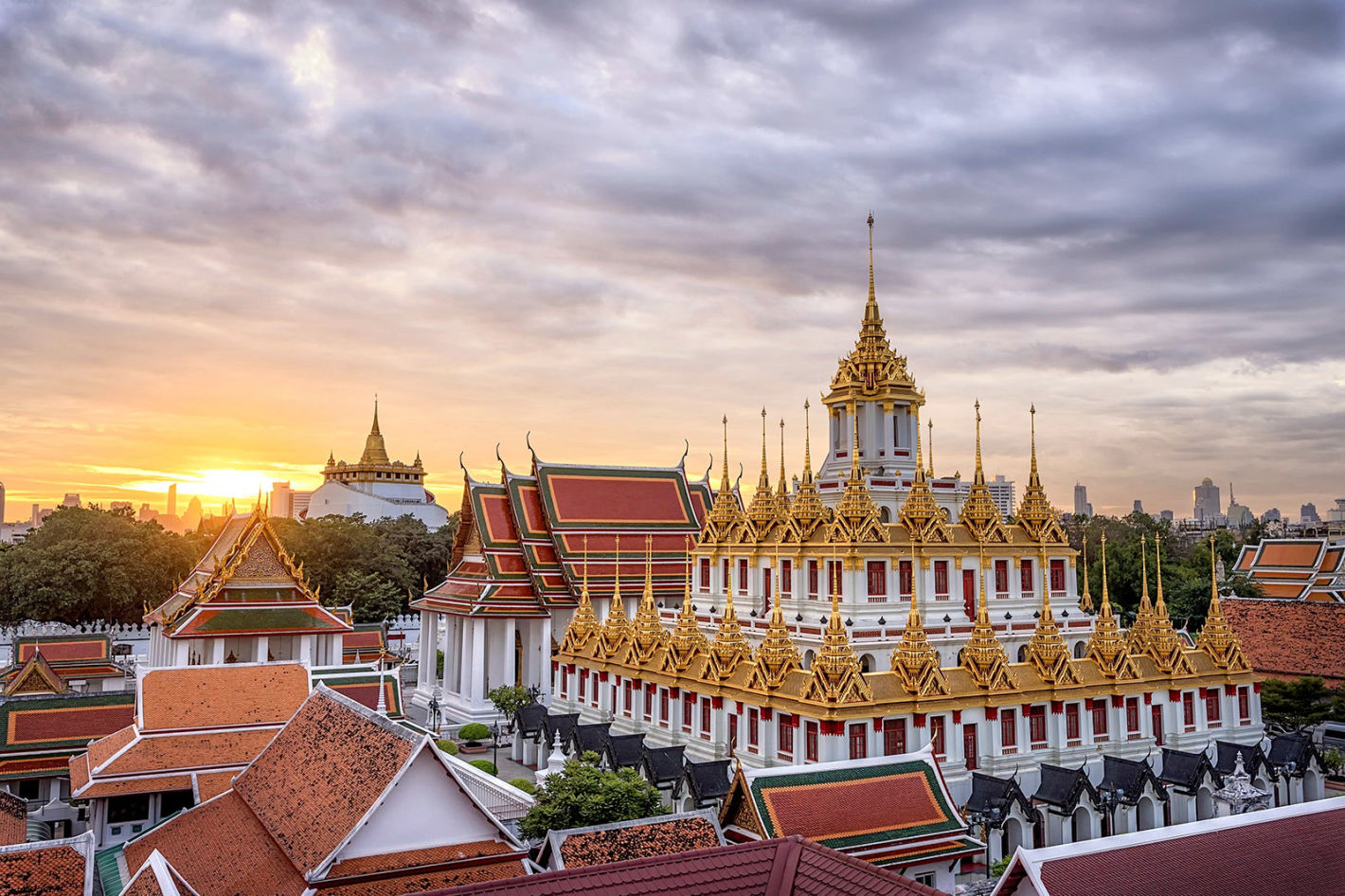
4. LOHA PRASAT-
Wat Ratchanatdaram Worawwihan
Bangkok has no lack of majestic temples and each is more elegant and impressive than the next, but Loha Prasat really stands out with its unique architectural identity. Also called the 'Metal Castle', Loha Prasat is located on the ground of Wat Ratchanaddaram and was submitted to UNESCO in 2005 to become a World Heritage site, highlighting the historical importance of the temple. Located very near Wat Saket and the Democracy Monument, it's a must-see if you happen to be around Khao San Road. Being located so close to Khaosan and Wat Saket, a visit to Loha Prasat is almost a must if you happen to be visiting this superb area and its Champs Elysées-style avenue. A small entrance fee or donation applies for entering this beautiful maze and its spiral staircase.
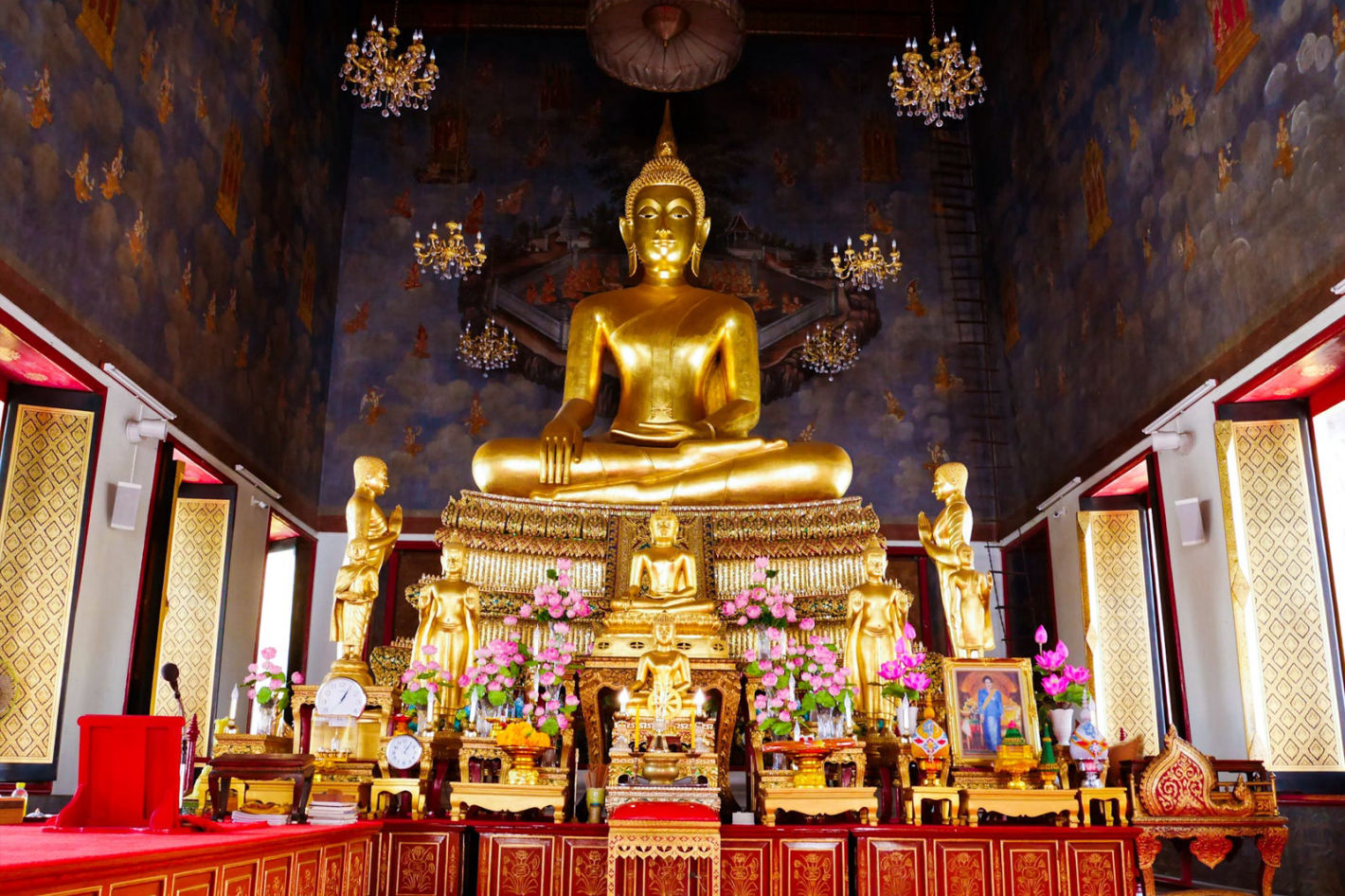
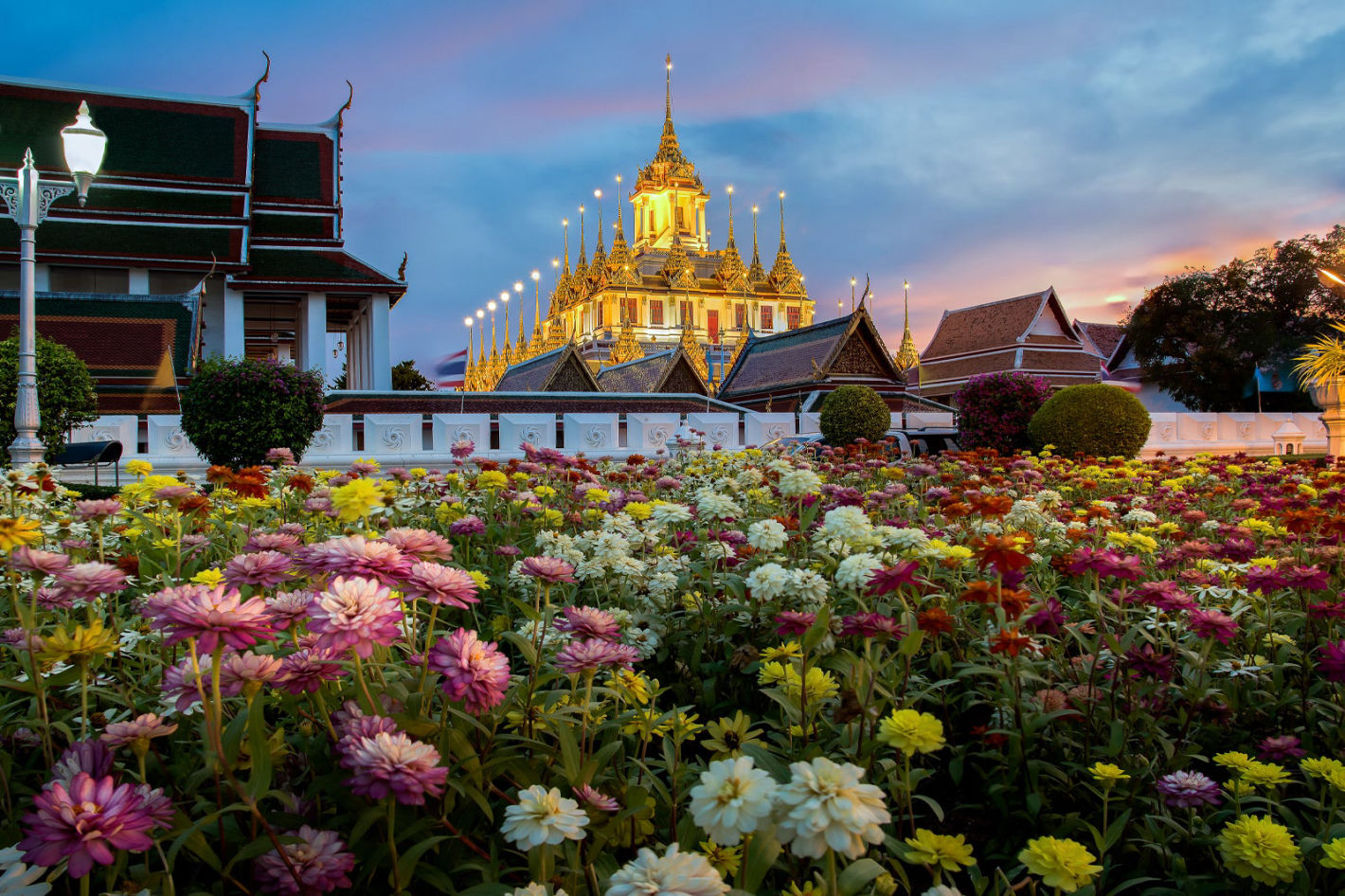
Don't miss the large white temples of Wat Ratchanaddaram surrounding Loha Prasat itself, as well as the golden seated Buddha and beautiful murals and door carvings. At the back of Loha Prasat, a popular amulet and Buddha statues market is well worth a visit.
Wat Loha Prasat
Location: 2 Maha Chai Rd, Wat Bowon Niwet, Phra Nakhon, Bangkok 10200, Thailand
Open: Daily from 9am to 5pm
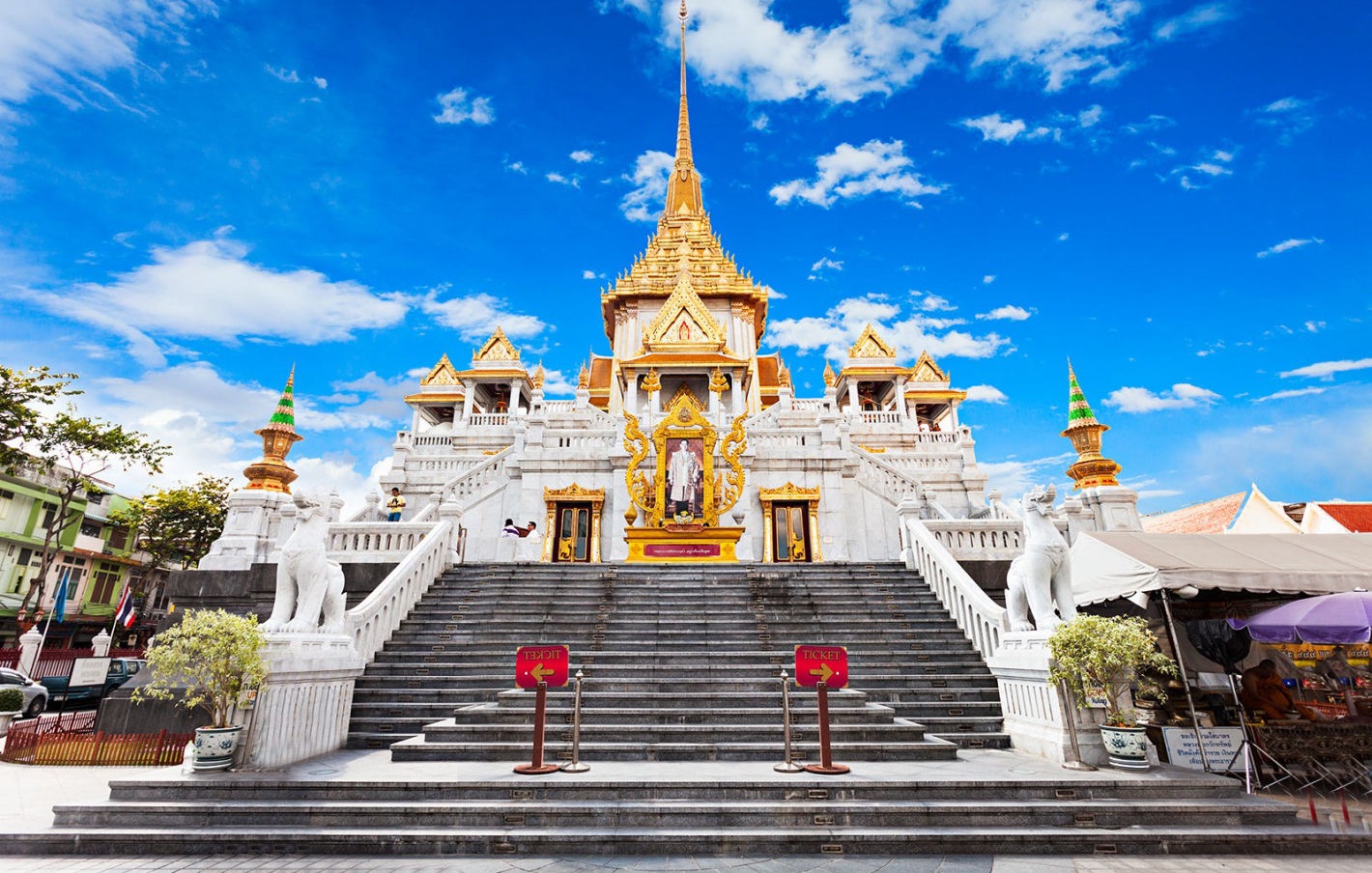
5. WAT TRAIMIT-
The Golden Buddha
Wat Traimit is an elegant, multilevel, white-and-gold temple located at the very beginning of Yaowarat Road, making it a perfect starting point for a Chinatown exploration. The main attraction of Wat Traimit is not only its beautiful architecture but the immense Buddha made of solid gold seated inside – the largest of this kind in the world.
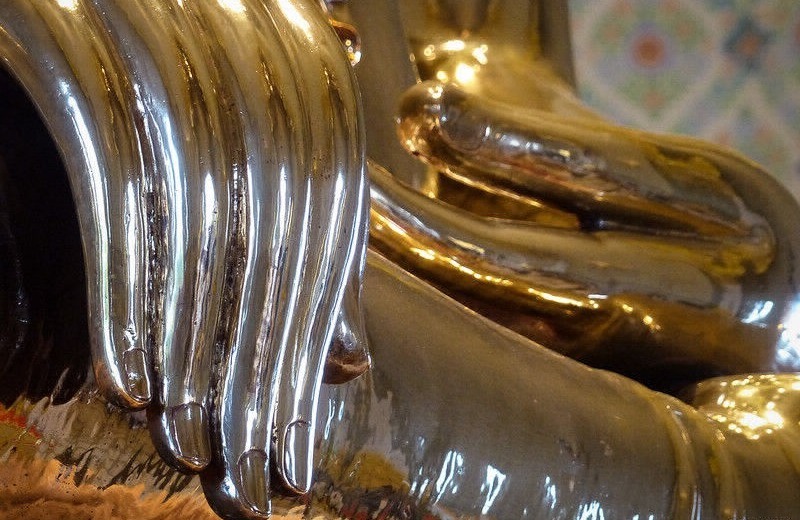
This 5-metre-high, 5.5-ton solid gold Sukhothai-style Buddha statue was long hidden under an unimpressive coating of stucco and plaster thought to have been made in the 13th-14th centuries. The gold hidden underneath was only revealed by accident in 1955 when it was dropped whilst moving it, Pieces of the plaster are still kept on display at the temple.
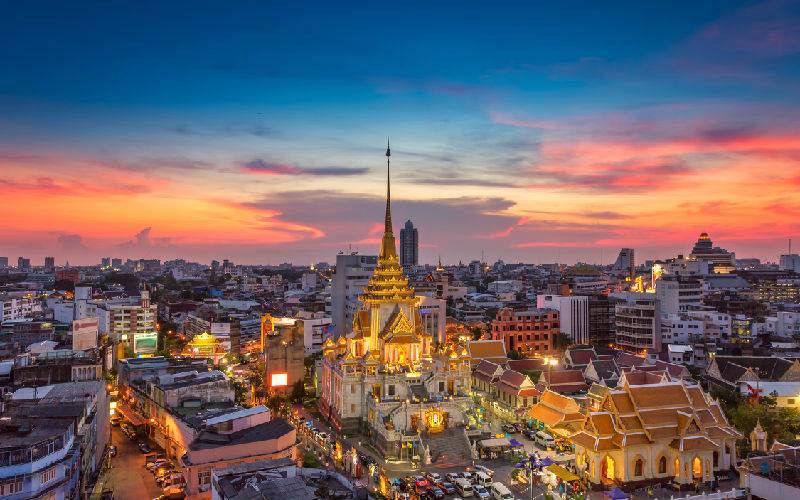
Above; Wat Traimit at sundown.
Wat Traimit has a museum on the 3rd floor, where you get to learn about the history of the Golden Buddha. A video presentation provides a brief background on Buddha images, followed by the full story of the sculpture within the temple. Exhibits also cover the historical background of how it came to be at Wat Traimit. The 2nd floor exhibits 3D presentations detailing the history of the Chinese traders in Bangkok.
Wat Traimit
Location: 661 Charoen Krung Rd, Talat Noi, Samphanthawong, Bangkok 10100, Thailand
Open: Daily from 8am to 5pm
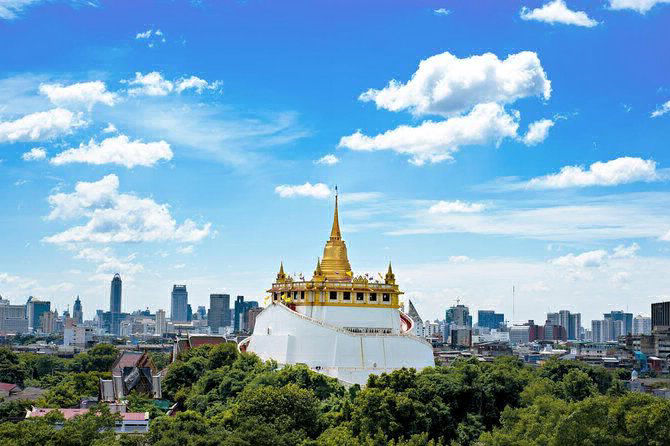
6. WAT SAKET-
The Golden Mount
Wat Saket is the temple where you can visit the unmistakable golden Chedi of Phu Khao Thong or 'the Golden Mountain'. Built on top of a high hill in the old city of Bangkok, this massive construction has a long and troubled history.
Wat Saket was the capital's crematorium and the dumping ground for some 60,000 plague victims in the late-18th century. At the base of the Golden Mount, you’ll find an unusual cemetery covered in vines and overgrown trees. It emits a rather spooky out-of-era vibe. Once you arrive at the top of Wat Saket, you’ll be surrounded by a wall of bells and panoramas of Bangkok Old Town.
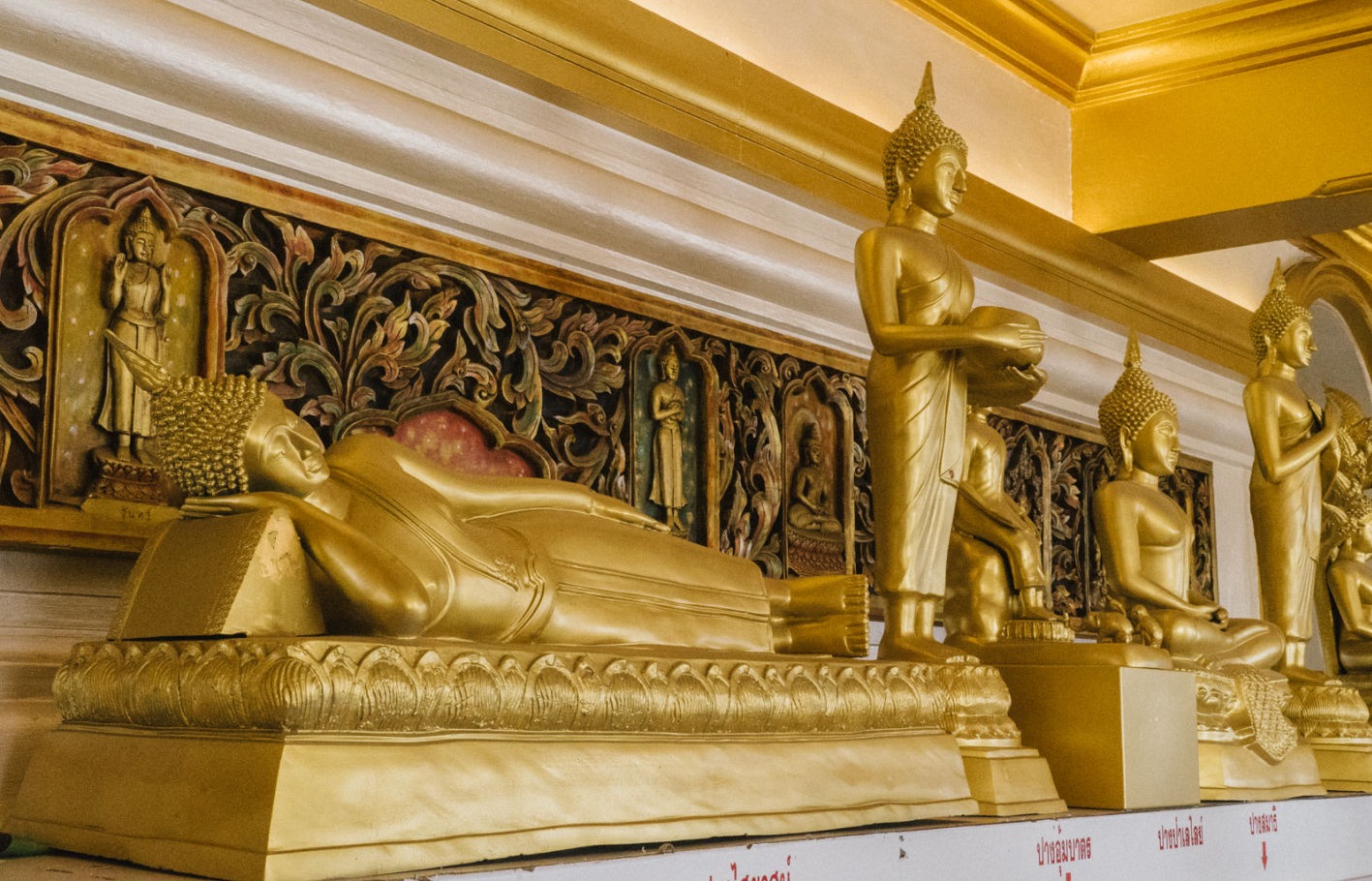
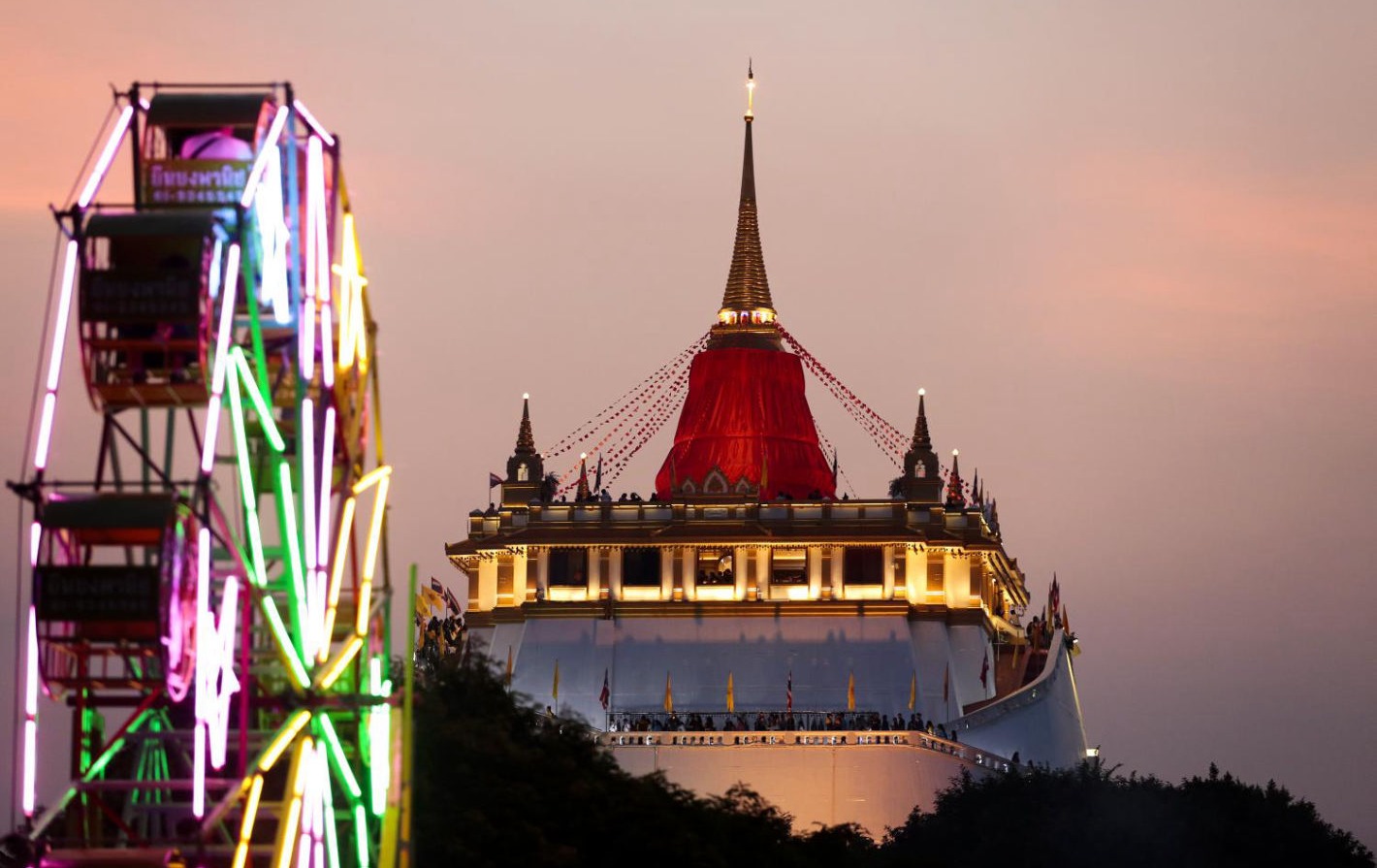
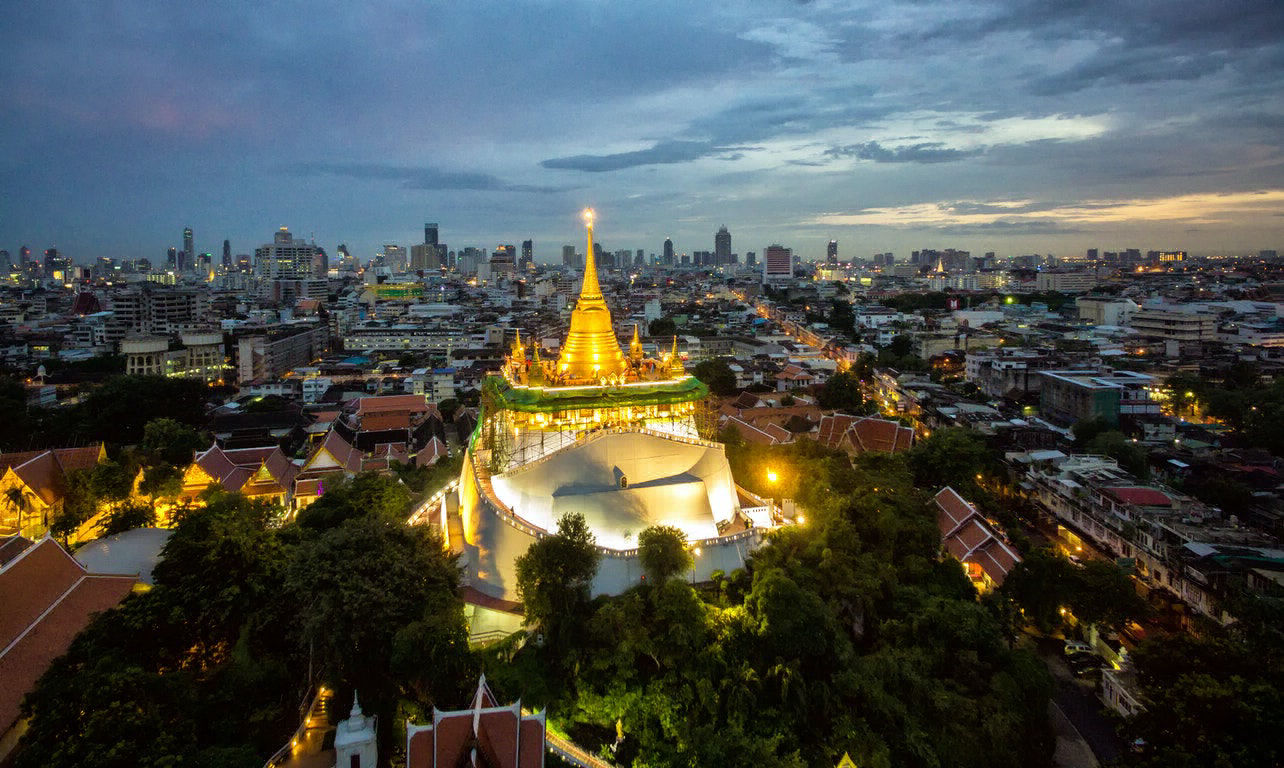
Colourful lanterns and decorative flags, as well as food vendors, fairground games and rides bring Wat Saket to life. Huge crowds pack the temple grounds from early evening to midnight for the entire week. Plan to go as early as possible to avoid a long queue to the Golden Mount.
Wat Saket
Location: 344 Chakkraphatdi Phong, Ban Bat, Pom Prap Sattru Phai, Bangkok 10100, Thailand
Open: Daily from 8am to 5pm

7, WAT MAHATHAT-
The Buddhist Institute
Wat Mahathat (or more precisely Wat Mahathat Yuwarajarangsarit Rajaworamahavihara) was built during the Ayutthaya period. It's one of the 10 royal temples of the highest class in Bangkok, used for royal ceremonies thanks to its strategic location between the Grand Palace and the Royal Palace.
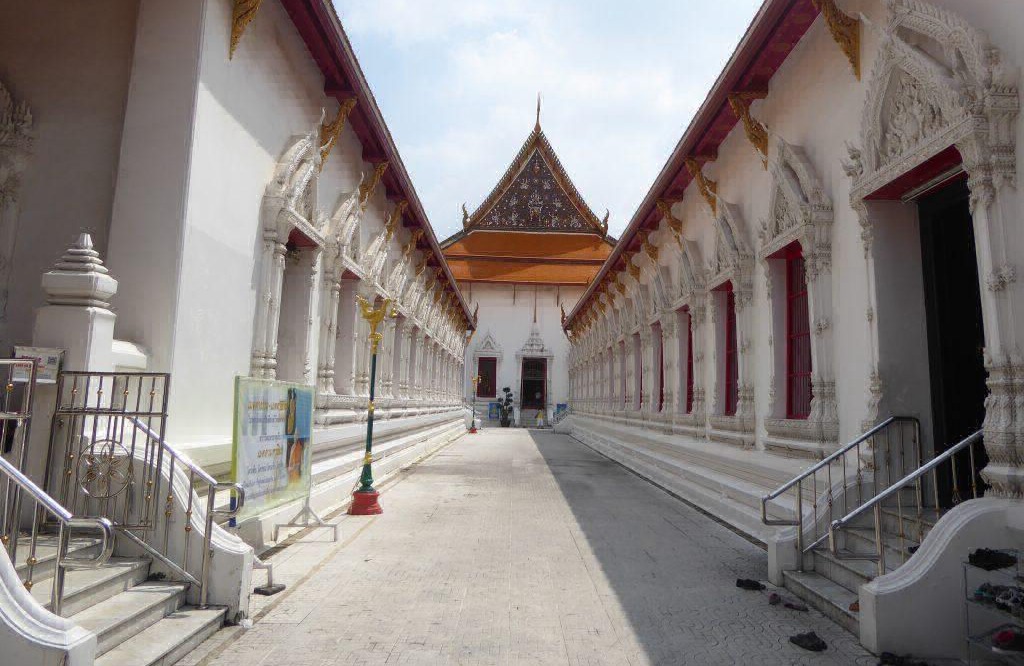
Above; The Buddhist institute at Wat Mahathat.
Located within the temple grounds is the oldest higher education institute for Buddhist monks in Thailand and an important centre for the study of Buddhism and meditation. Wat Mahatat has become a popular place to learn Vipassana Meditation, with some classes undertaken in English. Just opposite Wat Mahatat is a gigantic amulet market, which goes far beyond the few vendors on the street walkway
Wat Mahathat
Location: 3 Maha Rat Rd, Phra Borom Maha Ratchawang, Phra Nakhon, Bangkok 10200, Thailand
Open: Daily from 7am to 5pm
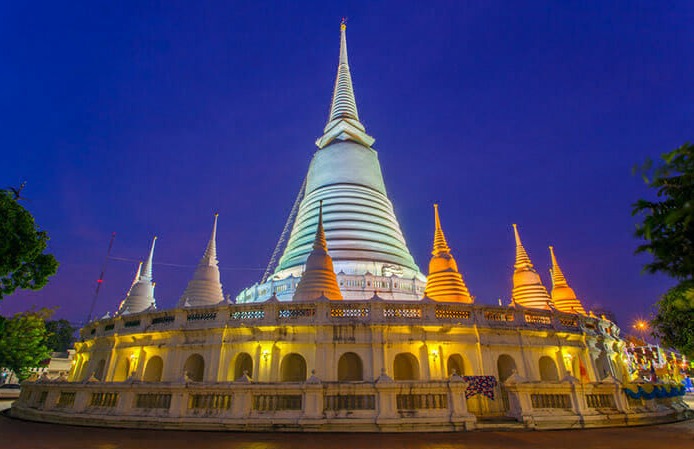
8. WAT PRAYON-
The White Pagoda
Wat Prayoon, or Wat Rua Lek, sits on the western side of the Chao Praya River. Built during King Rama III’s reign, the temple’s outstanding features include a large inverted bell-shaped chedi (pagoda), turtle mountain housing spirit houses, and a pond where visitors can feed the turtles.
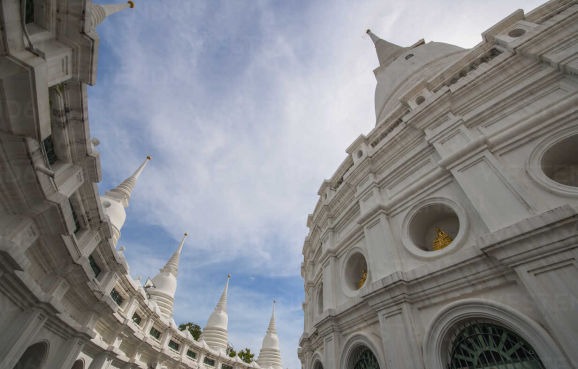
The temple is located on the Thonburi side of the river, at the foot of Memorial Bridge (Saphan Phut). This area is on the southern edge of the old Portuguese community (Kuthi Jeen), an area designated to Portuguese merchants and government officials during the Early Rattanakosin Period (after Ayutthaya was destroyed and King Rama I founded a new capital in Thonburi).
Wat Prayoon
Location: 24 Prajadhipok Rd, Wat Kanlaya, Thon Buri, Bangkok 10600, Thailand
Open: Daily from 8am to 5.30pm
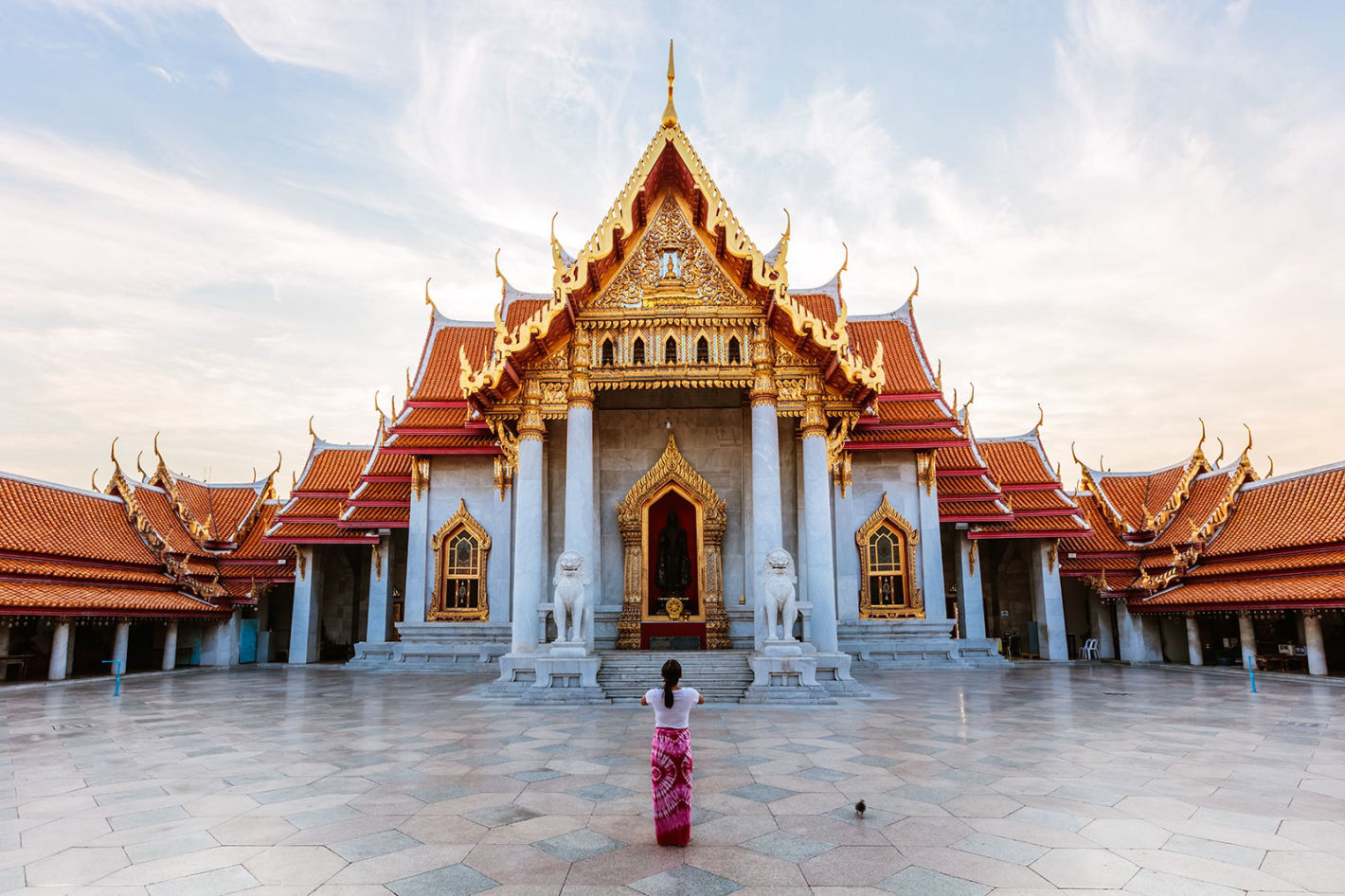
9. WAT BENJAMABHOPIT-
The Marble Temple
Wat Benjamabhopit, most commonly called Wat Benja, was built by King Rama V in 1900 and is renowned for more than one reason. It's nicknamed 'The Marble Temple' because all the external walls of the main temple are covered with marble imported from Italy but is more famous for being the temple embossed on the back of 5 baht coins. Located near the many government offices and palaces, this wat is highly revered and is often visited by high-ranked officials.
Wat Benjamabhopit
Location: Rama V Road, 5 Dusit, Dusit District, Bangkok 10300, Thailand
Open: Daily from 8am to 5.30pm
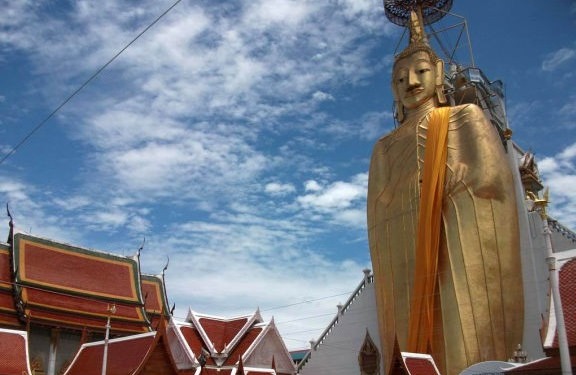
10. WAT INTHARAWIHAN-
The Standing Buddha
A soaring, 32-metre-high standing Buddha is what defines Wat Intharawihan, which borders Wisut Kasat Road at the northern edge of Banglamphu. Known as the Luangpor Toh, the building of this statue began in 1867, during the reign of King Rama IV. Decorated in glass mosaics and 24-carat gold, it took over 60 years to complete.
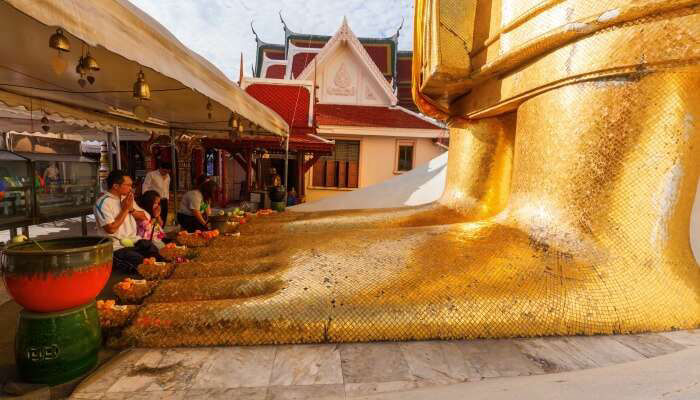
above; Making merit at the feet of the enormous standing Buddha.
The prayer room was built towards the end of the Ayutthaya period and has several interesting Buddha images, elevated murals on the walls and lavishly gilded window shutters. Outside are unusually carved stones and, tucked away in an alcove, there's a lifelike model of Luang Phaw Toh, a famous monk. In the small museum are old Buddha images and various paintings.
Wat Intharawihan
Location: 114 Wisut Kasat Road, Banglamphu, Phra Nakhon, Bangkok 10200, Thailand
Open: Daily from 6am to 6pm
MENZZOO MAGAZINE
Built with Mobirise